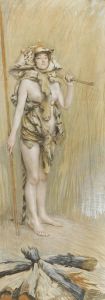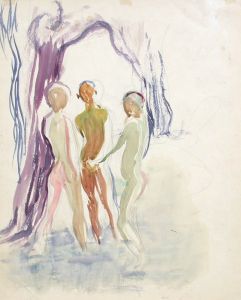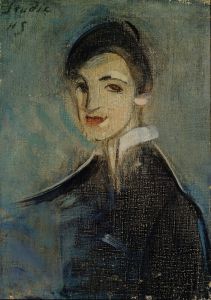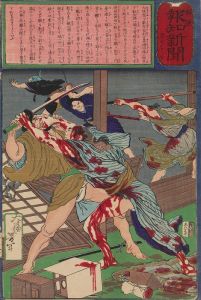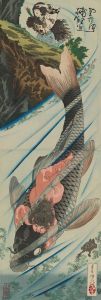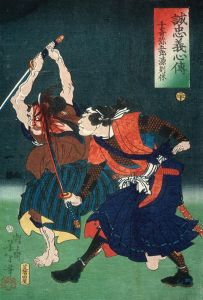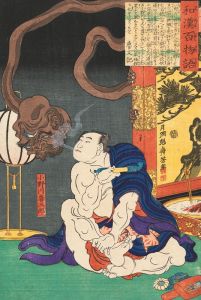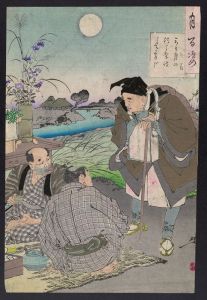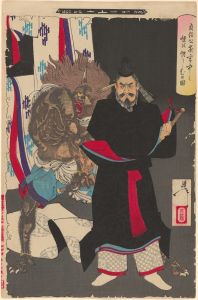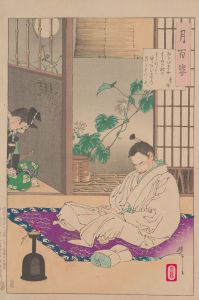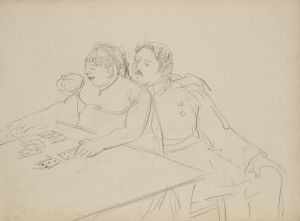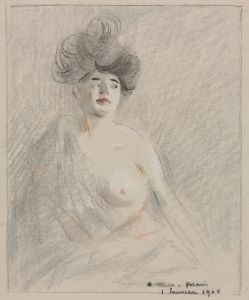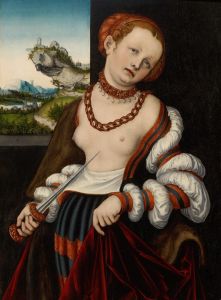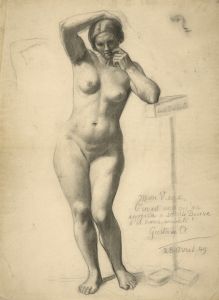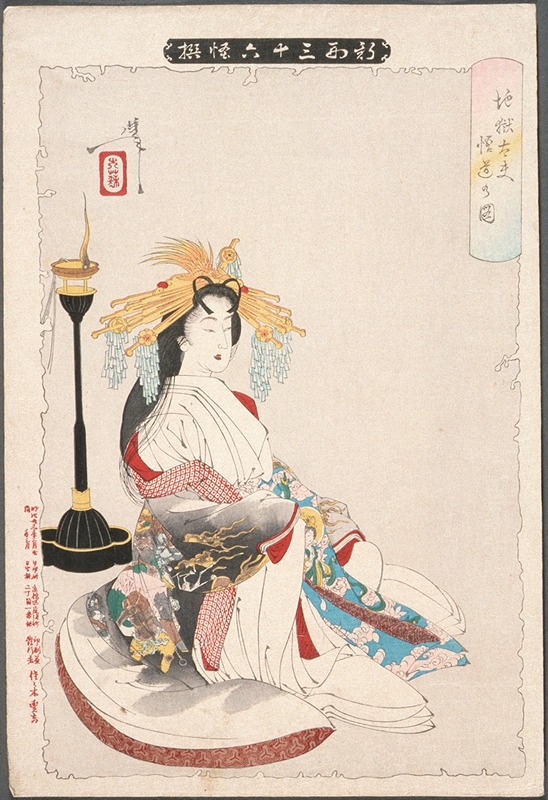
Enlightenment of the Courtesan Jigokudayū
A hand-painted replica of Tsukioka Yoshitoshi’s masterpiece Enlightenment of the Courtesan Jigokudayū, meticulously crafted by professional artists to capture the true essence of the original. Each piece is created with museum-quality canvas and rare mineral pigments, carefully painted by experienced artists with delicate brushstrokes and rich, layered colors to perfectly recreate the texture of the original artwork. Unlike machine-printed reproductions, this hand-painted version brings the painting to life, infused with the artist’s emotions and skill in every stroke. Whether for personal collection or home decoration, it instantly elevates the artistic atmosphere of any space.
"Enlightenment of the Courtesan Jigokudayū" is a notable woodblock print created by the renowned Japanese artist Tsukioka Yoshitoshi. Yoshitoshi, who lived from 1839 to 1892, is often celebrated as one of the last great masters of the ukiyo-e genre of woodblock printing and painting. His works are known for their dynamic composition, dramatic use of color, and psychological depth.
This particular print is part of Yoshitoshi's series "New Forms of Thirty-Six Ghosts" (Shinkei Sanjūrokkaisen), which was produced between 1889 and 1892. The series explores supernatural themes and ghostly apparitions, drawing on Japanese folklore, literature, and history. Yoshitoshi's interest in the supernatural was not only a reflection of popular culture at the time but also a personal fascination that permeated much of his work.
The subject of "Enlightenment of the Courtesan Jigokudayū" is Jigokudayū, a legendary figure in Japanese folklore. The name "Jigokudayū" translates to "Hell Courtesan," and she is often depicted as a courtesan who achieved enlightenment. The story of Jigokudayū is intertwined with themes of redemption and spiritual awakening, as she is said to have encountered the Buddhist monk Ikkyū Sōjun, who played a significant role in her transformation.
In Yoshitoshi's depiction, Jigokudayū is portrayed in a moment of profound realization or enlightenment. The print captures the tension between her past life as a courtesan and her spiritual awakening. Yoshitoshi's use of vivid colors and intricate details brings the character to life, emphasizing her beauty and the complexity of her experience. The background and setting often include symbolic elements that enhance the narrative, such as traditional motifs associated with the supernatural or spiritual realms.
Yoshitoshi's work is characterized by its ability to convey deep emotion and psychological complexity. In "Enlightenment of the Courtesan Jigokudayū," he masterfully balances the aesthetic beauty of the print with the underlying themes of transformation and redemption. This print, like many in the series, reflects Yoshitoshi's mature style, which combines traditional ukiyo-e techniques with innovative approaches to storytelling and composition.
The print is a testament to Yoshitoshi's skill in capturing the essence of his subjects while also engaging with broader cultural and spiritual themes. It remains a significant work within his oeuvre and continues to be appreciated for its artistic and historical value. As with many of Yoshitoshi's works, "Enlightenment of the Courtesan Jigokudayū" offers insight into the cultural and artistic milieu of late 19th-century Japan, a period marked by rapid modernization and a renewed interest in traditional art forms.
Overall, "Enlightenment of the Courtesan Jigokudayū" is a compelling example of Yoshitoshi's ability to blend narrative depth with visual artistry, making it a lasting piece of cultural heritage that continues to resonate with audiences today.





